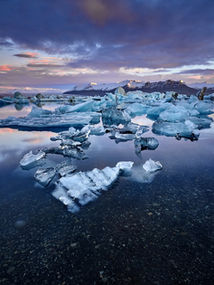Adventure Holidays on the Azores
An Enchanted World of Nature and Culture
The Azores, an archipelago of nine volcanic islands in the middle of the Atlantic Ocean, are a hidden gem for adventure holidays. With their diverse landscapes, rich cultural heritage, and vibrant gastronomy, these Portuguese islands offer a wide array of outdoor activities, unique local experiences, and family-friendly adventures that promise to create unforgettable memories. Step into the captivating world of adventure holidays in the Azores, where the wonders of nature, cultural depth, and the warmth of its people beckon.
Our Azores Adventure Holidays
Things to do ...
The Azores' adventure holidays blend thrilling outdoor activities, rich cultural immersion, and family-friendly experiences to create an unforgettable vacation. As you explore the archipelago's pristine landscapes, savor its unique gastronomy, and connect with its warm-hearted people, you'll be captivated by the beauty and charm of the Azores. Whether you seek a family retreat, daring escapades, or cultural enrichment, this remote paradise guarantees an adventure that will leave you with lasting memories.
Places to go ...
The Azores' adventure holidays blend thrilling outdoor activities, rich cultural immersion, and family-friendly experiences to create an unforgettable vacation. As you explore the archipelago's pristine landscapes, savor its unique gastronomy, and connect with its warm-hearted people, you'll be captivated by the beauty and charm of the Azores. Whether you seek a family retreat, daring escapades, or cultural enrichment, this remote paradise guarantees an adventure that will leave you with lasting memories.
Outdoor Adventures on the Azores - an adventure playground of untouched wilderness
The Azores' breathtaking landscapes make them an ideal playground for outdoor enthusiasts. Here are a few thrilling activities to explore.
The Azores offer an extensive network of hiking trails, with some leading to crater lakes and others to the tops of volcanoes. Don't miss the opportunity to hike up Mount Pico, the highest peak in Portugal, when visiting Pico island, but each island of the Azores' comes with it's own unique hiking trails and experiences, including round trails around collapsed caldeiras, mystical tranquil crater lakes or scencic trails along the rugged coastline.
Water adventures are plentiful on the Azores and you are spoiled for choice when exploring the coastline and exploring hidden caves on your way. If you opt for canoeing, kayaing or SUP, wildlife watching tours or coasteering adventures, the islands of the Azores hold the perfect outdoor adventure for you.
Family-friendly adventures on the Azores - indulging in a volcanic wonderland
Many of the scenic hiking trails around the Azores' islands are suitable for families. Explore the stunning twin lakes of Sete Cidades, venture on the volcanic grounds of the Capelinhos volcano on Faial island or wander along the scenic coast of Santa Maria.
Outdoor adventures like coasteering, canyoning or zip-lining are a very special adventure to enjoy on the Azores with the whole family. Explore hidden gems along the rugged coast, following rapid ravies down the mountains or zip-line through lush forests for an exhilarating experience.
The Azores are one of the world's premier whale-watching destinations. Join a boat tour to spot these magnificent creatures, including sperm whales, dolphins, and blue whales. The tours are informative and great for family, even with smaller children. For a more personal encounter with the local marine wildlife, join a swimming with dolphins or snorkeling with Mantra tours.
Snorkeling along the Ilhéu da Vila Franca, a small, volcanic islet off the coast of São Miguel, offers a unique swimming experience in the natural pool formed within its crater. Explore the colourful underwater world around caves and the rocky shoreline.
Local Experiences on the Azores - immerse yourself in Azorean heritage
The Azores are dotted with natural thermal baths and geothermal pools, like the famous Terra Nostra Gardens in São Miguel. Soak in the soothing mineral waters and experience the natural beauty of the islands.
The Azores are known for their cheese, tea, and pineapple plantations. Take a guided tour of these farms, where you can witness the production process and taste local specialties. For a more immersive experience, why not join a local cooking, learn how to make local ice-cream the traditional way or visit the only tra plantation in Europe on São Miguel.
Festivals are being celebrated on the Azores islands all year round. Join in on the local festivities and cultural events, such as the Holy Ghost Festivals, where you can experience Azorean traditions and taste delicious street food.
Get inspired for your next adventure
For more information on the Azores and useful travel tips, please visit our Azores travel guide and travel bonanza!
Adventure Holidays Destinations

























